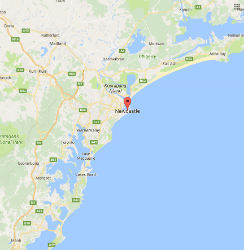Every day, hundreds of road accidents occur across the country. Accidents end with serious injuries that threaten human health and life.
Accidents in the oncoming lane are one of the most destructive types of accidents.
Dangerous places on the roads
Detour and overtaking are rightfully considered the most dangerous types of manoeuvres. Rain, fog, heavy snowfall, night, bright sun, light from distant and fog lights that hit the eyes causes confusion in the person behind the wheel.
This state is not the most suitable for making the only correct decision instantly. Concentration, strict adherence to the rules of the road by the driver and preparedness for emergency situations will help to avoid accidents on the roads.
Road obstacles
The road through the forest is not a place to relax. An animal, a pedestrian, a cyclist that suddenly appears on the road, a lost load, and even poor visibility, can provoke the driver to automatically turn the steering wheel and go into the oncoming lane. Speed, “oncoming” is busy, slow down too late! What to do? There is only one way out – this is going to the side of the road.
For a successful manoeuvre, it is better to add throttle rather than the brake.
By increasing the speed, the grip of the tire with the road surface increases. In this case, it is necessary to turn the steering wheel in one direction, then in the other. Repeat this “swing” of the steering wheel must be carried out quickly and several times (to align the direction of movement). Car skidding is possible. If the shoulder is wet, then you need to get back on the road by slowing down a little, changing to a lower gear. Turn the steering wheel, at an acute angle, to the left. When the right wheel is on the road and in order not to drive into the “oncoming”, it is necessary to turn the steering wheel to the right and direct the car in the direction of movement.
If the obstacle is small, it is passed between the wheels or rammed. It’s better than driving into a busy oncoming lane.
What to do when visibility is temporarily lost (windshield is closed) due to snow and debris falling from the body of the front truck or clouds of black smoke from a diesel engine obstructing the driver’s view? The first rule of safe driving is to keep the distance between cars. Before going around a van with a fuming engine, you need to make sure that the oncoming lane is not busy and slow down to overtake.
Sharp and long turns
To go through sharp turns, you must first slow down and calculate the optimal trajectory for entering it. High speed of the car and the slightest obstacle under the wheel will throw the car into the oncoming lane.
If on a long turn, an oncoming car is driven and it flies towards you, then the only way out, without slowing down, is to move into a ditch.
Descents and ascents
There are roads with uphills stretching for several kilometres. Provided that the road is clearly visible, you can overtake. At the end of the ascent, the oncoming vehicle cannot be seen. Therefore, it is better to refuse such a manoeuvre.
On descents, the vehicle must be controlled. This requires that the engine is running and the gear is engaged. “Skid” of the car and coasting must necessarily end in the oncoming lane.
We at Cars Wanted Newcastle buy your car for cash up to $8,999 same day from any region. When selling your car to Cars Wanted Newcastle we provide an efficient and convenient service.

